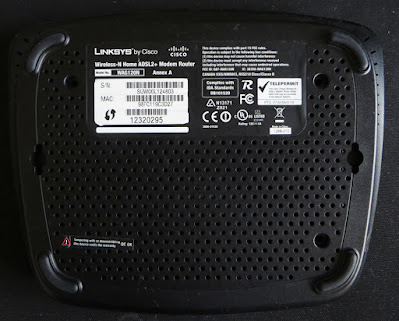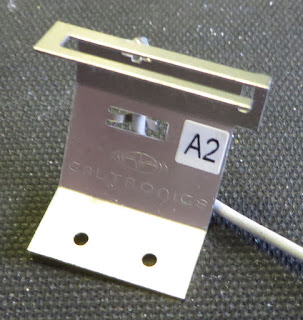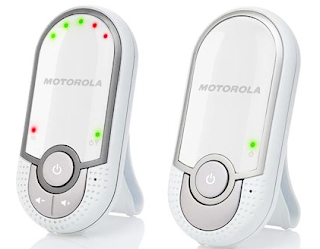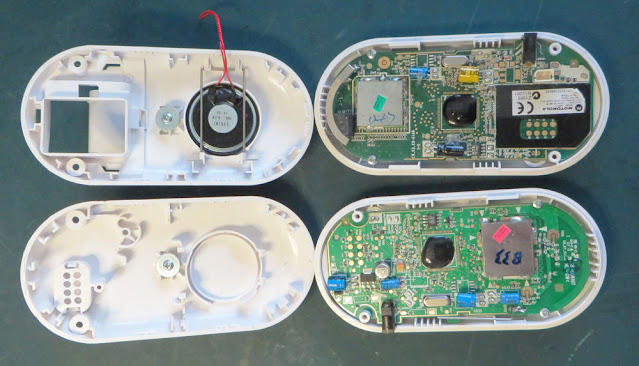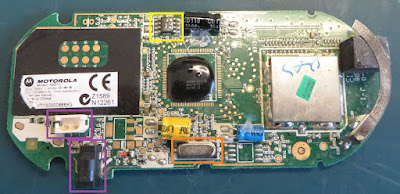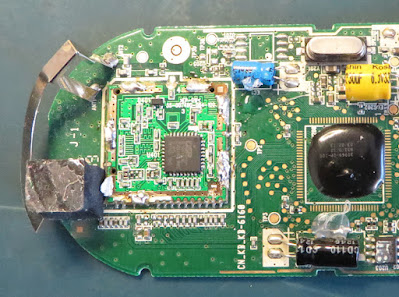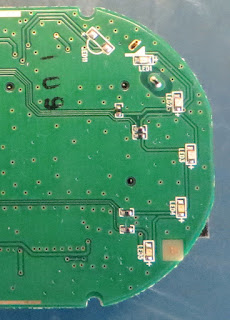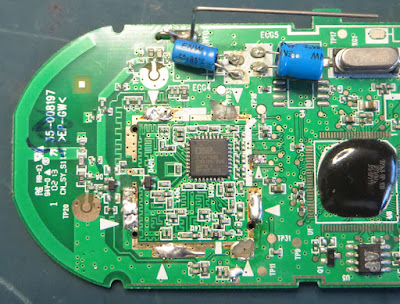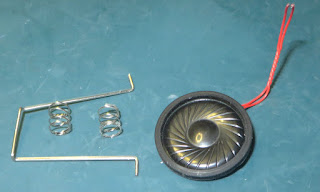Introduction
This post looks at electronic components that could be salvaged from a Sony digital photo frame, DPF-HD1000 (circa 2010).
Tear Down
Four plastic screws secure the two halves of the photo frame case. A thin prying tool was used to release the internal plastic clips.
 |
| DPF-HD1000 Front Cover Removed |
Removing the front panel shows the LCD and two peripheral items, an IR sensor and an LED strip.
Internals of the Photo Frame
Shifting the position of the display shows the main Printed Circuit Assembly (PCA) and the board to peripheral connections.
 |
| DPF-HD1000 with PCA Exposed |
The IR receiver was connected with a 3-pin cable to the main PCA. The markings on the sensor appear to be 28m5 and E23, but there is no data available for the part online. The connections to the sensor could possibly be determined from the cable colours.
 |
| DPF-HD1000 LED Logo Board |
The small LED PCA was labelled ‘logo LED board’ circa 2011. This board was used to illuminate the Sony logo built into the front plastic cover.
 |
| DPF-HD1000 LED Logo Board Powered |
From the website Panel Look, the LCD appears to be from CPT, although discontinued, and could be used for repair or paired with a converter board capable of driving 60-pin flat flex cables from various interfaces such as USB.
 |
| DPF-HD1000 LCD Part Number |
After removing the 4 screws retaining the PCA, the entire electronic assembly could be removed.
 |
| DPF-HD1000 Complete Electronics Assembly |
Disconnecting all the peripherals from the PCA, attention turned to some interesting components on the main PCA. The PCA was labelled ‘Sony Basic 10DW MP’.
Possible PCA Component Salvaging
The USB connectors, surface mount and vertical switches could be salvaged from the PCA. The combination card holder on the PCA was an interesting component (large component on the right of the PCA); no data could be found from the A238B marking on the device.
 |
| DPF-HD1000 PCA Side 1 |
Upon reviewing the passives, inductors and the common mode filter near the DC jack (bottom right) these could be salvaged and reused. Due to the age of the PCA, the SMT electrolytic capacitors are not recommended for salvaging, although they did appear in near-new condition.
For active devices, the single linear regulator 1117T near the SD card holder could be salvaged.
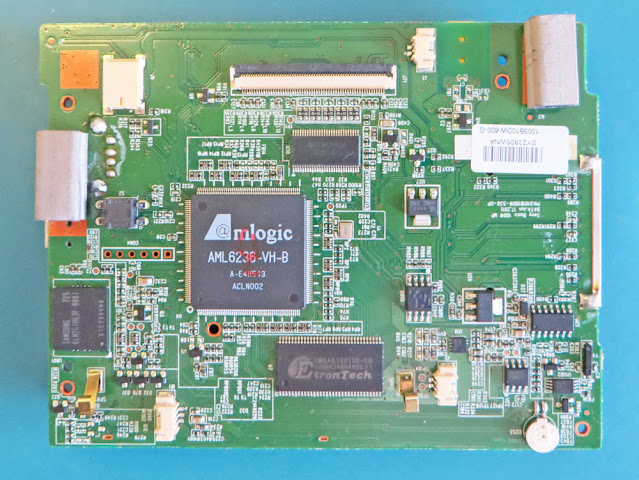 |
| DPF-HD1000 PCA Side 2 |
Flipping the PCA shows several chips, connectors for the peripheral devices and a smattering of passives. If any external devices, such as the IR sensor, were earmarked for salvage, the surface mount connectors could also be salvaged from the PCA.
To the left of the main Amlogic controller is a surface mount switch which may be responsible for detecting rotation (movement) of the display. When shaking the PCA, the internal mechanism can be heard moving. The component marking is EnSky, however no data could be located on the switch.
There is an oscillator, possibly 24 MHz (middle PCA), driving the Amlogic controller and a watch crystal for the on-board RTC (PCA bottom right) that may be useable.
An ELNA button supercapacitor, rated at 3.3 V 0.22 uF, provided backup for the RTC. Looking at the supercapacitor, corrosion was sighted on the case of the device and therefore not useable.
 |
| Corrosion on Supercapacitor |
The main controller AML6236-VB-B is not listed on the Amlogic website and is likely not worth salvaging.
For storage, Sony opted for a Samsung 2 GB eMMC, part number KLM2G1HE3F-B001 (far left on PCA2). While this component does not appear to be manufactured any more, it would be a great device for experiments. The PCB model still appears to be available (SnapEDA). Even though the component may need to be reballed when fitting the component to a new PCA, connection to micros such as ST or Microchip would most likely be possible.
The 512 Mbit DDR1 memory was provided by Etrontech, part EM6AB160TSD-5G. This part could be used for repairs.
Interfacing the Amlogic controller to the LCD was a Texas Instruments flat panel driver part number SN75LVDS83B. The datasheet is an interesting read and even contains a good summary of PCB layout techniques.
Some other active components on the PCA are the serial flash, switching and linear regulators, speaker driver and RTC. There is also an unmarked chip on the board whose purpose is not clear. Many of these components could be salvaged depending on requirements.
Component Salvaging Example
Often questions posted after salvaging blogs relate to how components are removed from PCAs. As an example, consider the removal of the DC jack from the PCA.
 |
| Setup for Component Removal |
The jack component is a 5-pin device that could be desoldered although in this example it was removed using a heater plate. Firstly, all the components on the opposite side of the DC jack were removed. These components consisted primarily of passives. This side of the board was made as flat and clean as possible. Then a heater plate, in this instance a MiniWare MHP50, was used to preheat the side of the PCA where the passives were removed (beneath the DC jack). Shortly after the heating cycle, a reflow cycle was run to pry the jack from the PCA. This technique certainly cannot be used for every board and component as the component population density and board construction can have significant effects on heating.
 |
| Salvaged DC Power Jack |
Other tools such as a hot air desoldering tool or a small temperature controlled oven may be better suited for the removal of specific components.


